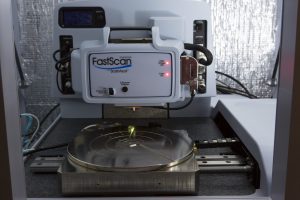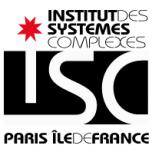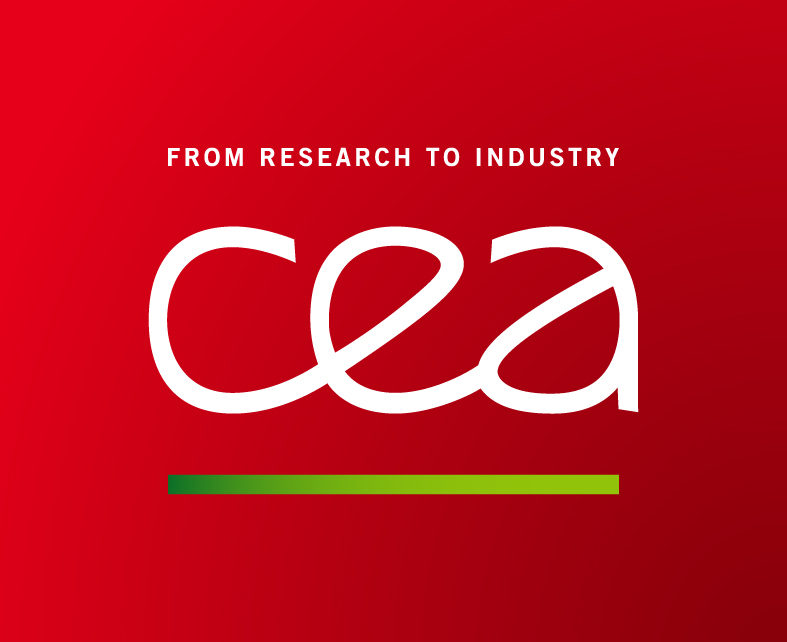Interdisciplinary Multiscale Atomic Force Microscope Platform (IMAFMP)
Feynman’s famous lecture in 1960 titled “There is Plenty of Room at the Bottom” is still inspiring a multitude of scientists from a vast number of fields to think small. Materials, structures and devices fabricated at nanoscale dimensions have been identified as the basis for innumerable future technologies. These applications span the entire range of scientific, biological and engineering endeavors, such as photovoltaic solar cells, spintronic devices, biomedical implants, nanoscale transistors, to the design of novel microstructures and materials that can be processed “atom by atom”. Indeed, the importance of dimensionally-restricted material systems (both from the perspective of engineering applications and for the fundamental understanding of material behavior) is accelerating at an ever-increasing rate. The design and fabrication of such systems is a significant accomplishment in itself, however being able to characterize (and in the future control) the mechanisms along which electrical, magnetic, chemical, structural and/or mechanical properties are selected and coupled from the nanoscale to the microscale present a major additional challenge. There are a multitude of different tools and methodologies to obtain individual local maps of these properties at the nanoscale. On the other hand, it remains far more difficult to access and characterize the coupling between them (the stress, strain and elastic energy fields at a given location will e.g. depend non-locally on the device macro-scale geometry because of the elliptic nature of elasticity equations).
With this in mind, several teams from various different fields (complex systems, mechanical and nano-solid mechanics, statistical physics, physical chemistry of materials, Synchrotron, near-field microscopy…) are collaborating under “Interdisciplinary Multiscale Atomic Force Microscope Platform (IMAFMP)” to address this impasse. Researchers within IMAFMP currently have a significant platform (Interdisciplinary Multiscale Platform, or IMP, see section 4.1) of tools to fabricate, manipulated, characterize, analyze, store… nanoscale objects from the nanoscale to the continuum scale. However until recently this platform was missing a significant tool: an Interdisciplinary Multifunctional Atomic Force Microscope Platform (IMFAFM) permitting simultaneous cartographies of nanoscale topographic, mechanical, chemical, and electrical properties. Ile-de-France and RTRA have provided the financial backing to fill this gap.
IMAFMP Collaborators
IMAFMP Publications
Collaborators research projects and experimental requirements
Researchers within IMAFMP are involved in a variety of different scientific fields. Hence they require various types of simultaneous data. Despite their differences all researchers require access to nanomechanical information. Below one will find the title of research projects currently using IMAFMP:
- Combined Topographical and Electrochemical measurements on cells in buffer solutions
- Characterization of the mechanical properties in organic coatings and molecular structures
- Magnetoelestic domain formation in epitaxial layer
- Organic photovoltaic solar cells for renewable energy
- AFM study of structures and mechanical properties of dry colloidal systems
- In situ observation of the propagation of cracks in heterogeneous materials and their post mortem observations
- Damage propagation in oxide glasses: From microstructural changes to failure properties
IMAFMP’s solution
IMAFMP has purchased a Bruker FastScan/Icon Atomic Force microscope. This AFM permits us to tap the surface of a sample at a constant controlled force. Thus allowing us to extract the force curve, obtain a reduced modulus in real time and the young’s modulus post-scanning at every pixel. IMAFMP Members are carrying out various types of research from nanomechanical measurements of glass surfaces to studying nanomechanical properties of biological cells. Thus we require a verity of functionalities for this AFM.

Standard modes of operation
- Contact Mode
- Tapping (semi-contact) Mode (air)
- Non-Contact: The AFM maintains a constant distance from the surface to the AFM tip.
- Liquid Mode: Enables scientist to work in liquids, foams, suspensions, biofluids, basic/acidic environments… in tapping, contact, intermittent contact, and EFM (possibility of electrically polarize the tip) modes.
- Lateral Force Microscopy (LFM): sensitive to frictional effects and can detect changes in material with no accompanying changes in morphology occur.
- Phase Imaging: Mapping of the phase lag between the periodic signal that drives the cantilever and the oscillations of the cantilever. Changes in the phase lag often indicate changes in the properties of the sample surface.
- Lift Mode: Two-pass technique used in magnetic force microscopy (MFM) and electric force microscopy (EFM) to separate the effects of the electric and mechanical forces tip-sample forces.
- Magnetic Force Microscopy (MFM): Enables scientists to map spatial variations of magnetic forces on a sample’s surface
- Electric Force Microscopy (EFM): Mode that measures electric field gradient distribution above the sample surface.
- Force/Distance spectroscopy: Study of the attractive and repulsive forces on a tip during the approach and retraction. Used in the study of fundamental force interactions, nano-scale adhesive and elastic response, binding forces, colloidal studies, and chemical sensing.
- Force Volume Mapping: The Force/Distance spectroscopy is for 1 point on a surface. The Force Volume Mapping is a 2-D array of the Force/Distance spectroscopies.
- Surface Potential: Mapping of the electrostatic potential.
- Piezoresponce Microscope (PFM): Imaging and manipulation of ferroelectric domains
- Nano-indention: Enables users to characterize the local elastic modulus and local hardness of a sample.
- Nano-scratching: Used to study film adhesion and durability
- Temperature control system: Permits scientists to operate in a wide range of temperatures (-35°C≤T≤250°C).
- Electrochemistry AFM (ECAFM): Permits scientists to study the interchange of chemical and electrical energy.
Non-standard modes of operation
- Constant Force: During tapping mode, the force between the surface and the AFM tip remains constant (resolution ~1pN). This gives way to the acquisitions of nano-mechanical information (elastic modulus, adhesion, deformation, and dissipation).
- Constant Force Liquid mode: Enables scientist to work in liquids, foams, suspensions, biofluids… in constant force giving way to the acquisition of nano-mechanical information.
- Constant Force Conductive Atomic Force Microscopy (CF-CAFM): The AFM will operate in constant force during this mode. This permits conductive measurements on extremely delicate surfaces. Also, it is a 1 pass technique: first and only pass measures both the topography of the surface and low-level currents between probe tip and sample.
- Torsion Resonance Mode (TR-mode): measures and controls dynamically lateral forces between the probe tip and sample surface.
- Lights Off Lift Mode: The laser can interfere with MFM and EFM measurements. However since the AFM has acquired the topography of the sample in the first scan the laser is not strictly required for the second scan. Hence, we have an AFM that can turn off the laser for the second pass.
- Higher rates of scanning: Many times, an object of interest is too fast for a traditional AFM. Hence, the state of the art AFMs which have an image acquisition rate of 10 image per second are requested in this option.
Funding Agencies
IMAFMP access
IMAFMP does have dedicated access time for users outside of the consortium. For access please contact Cindy L. Rountree.









